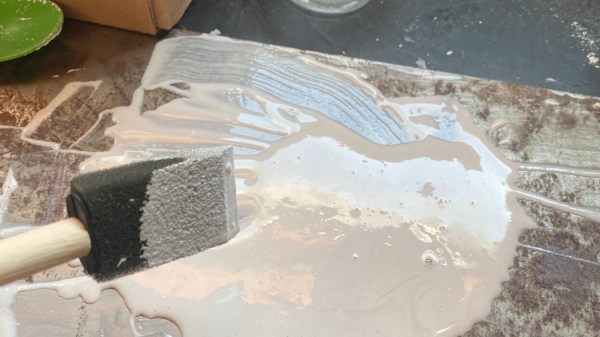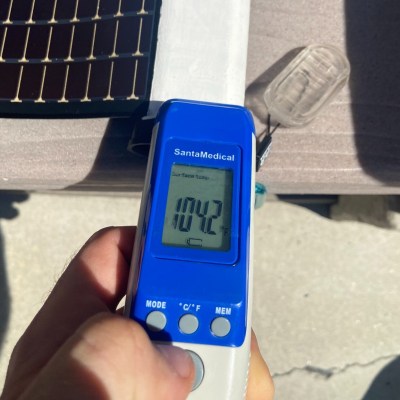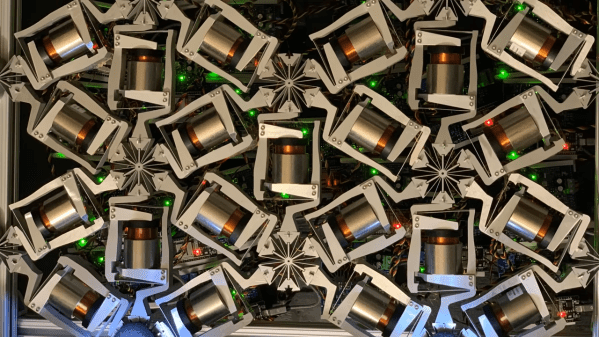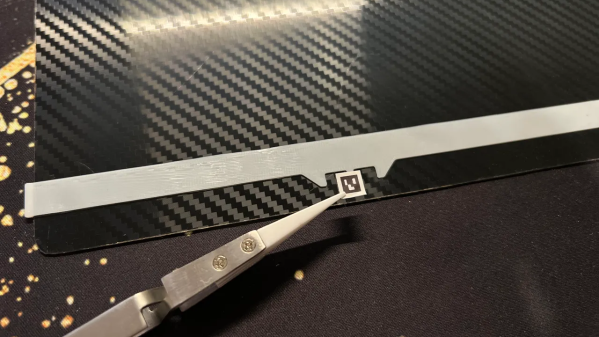In a way, an e-paper display makes an excellent foundation for a reprogrammable RFID card. The display only needs power during a refresh, and 125 kHz RFID tags are passive in the sense that the power for the RFID transaction comes from the reader itself. [Georgi Gerganov] has put those together in the GGtag, an open-source project for a 3.52″ e-paper badge with a trick or two up its sleeve.
 One clever function is that it is programmable with sound, a feature built off another project of [Georgi]’s called ggwave, a data-to-sound (and vice-versa) framework that has been ported to just about every hardware platform one cares to imagine — including mobile phones — and can reliably send data through the air.
One clever function is that it is programmable with sound, a feature built off another project of [Georgi]’s called ggwave, a data-to-sound (and vice-versa) framework that has been ported to just about every hardware platform one cares to imagine — including mobile phones — and can reliably send data through the air.
Transmitting data over sound is limited in throughput but has a number of advantages, not least of which is the huge range of compatible devices. There’s a web-based tool for programming the GGtag with sound available at ggtag.io that will give you a preview and let you hear how it works. The data encoding method gives transmissions a charming beep-boop quality that’s a bit reminiscent of an analog modem handshake. GGtag can also be programmed over USB serial, a faster (but somewhat less exciting) option.
The project’s GitHub repository contains GGtag’s code and technical details, and the CrowdSupply project is in the works for anyone who would prefer to buy one once they become available.






















